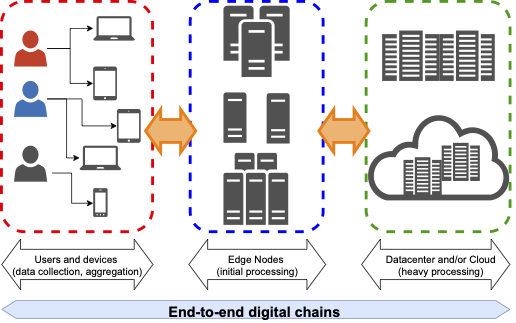EnergyLabels

Scientific discovery, product development, data science and artificial intelligence, online shopping, and entertainment rely increasingly on digital services. Digital services are vital for the Netherlands economy, already reaching 60% of GDP and growing. However, they come with a significant, rapidly-increasing energy cost, raising sustainability concerns: a mid-size datacenter alone consumes as much energy as a small town; in 2019, the Dutch datacenters combined consumed 3-times more energy than the NS. In 2019 this amounted to 2740 GWh, an 80% increase compared to 2017. Even more concerning, Worldwide estimates project the ICT sector to reach 21% of the global energy consumption by 2030.
However, datacenters are only the final link in a digital chain. Users interacting with devices — mobile phones, tablets, or laptops — trigger entire digital chains, combining multiple communicating computing layers and data transfers: from the device itself, through the edge, to the datacenter. Each layer has its own computing infrastructure (see the Figure below). At each layer, decisions are made about how, where and when applications are running and/or data are transferred. These decisions have a significant impact on the user-perceived quality-of-service (QoS), but also on the energy consumption – per layer, and for the entire digital chain.
We argue that the first step to reduce waste in computing is to quantify the energy efficiency of end-to-end digital chains. This project focuses on designing an integrated framework (i.e., the methods, metrics, and tools) for this quantification effort. Specifically, we aim to define a reference architecture of digital chains, use it to define an analytical digital-chain energy-efficiency model that exposes the factors that impact energy efficiency along the chain, and support it with a high-level functional simulator to assess different operational scenarios and parameters that affect the energy efficiency of digital chains.
